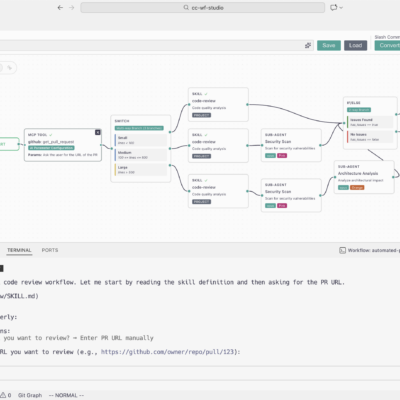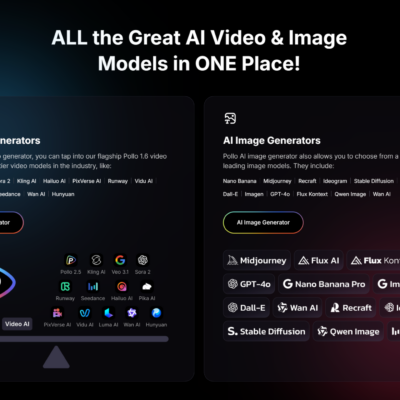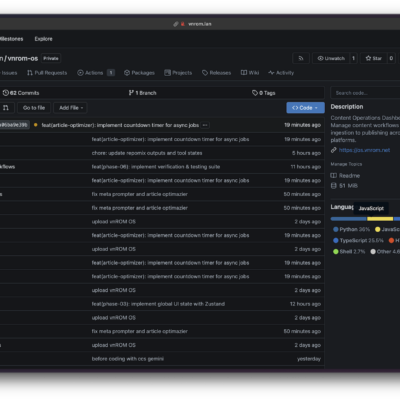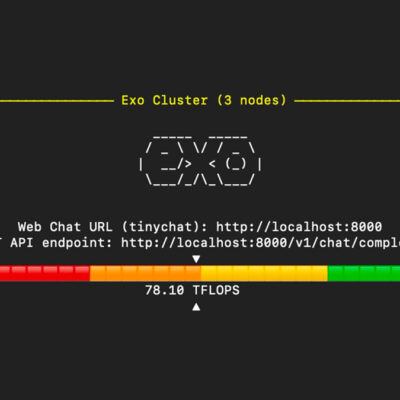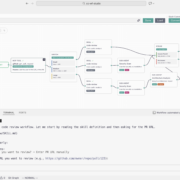N8N has become an indispensable tool for many, myself included, allowing us to automate complex workflows with remarkable ease. Its drag-and-drop interface and extensive library of nodes make it incredibly powerful for integrating services and streamlining operations. However, as your automation needs grow, a common challenge arises: how do you ensure your N8N instance can handle increased load and maintain stability?
In my experience, relying on a default, single-instance N8N setup, especially for critical production environments, can quickly lead to bottlenecks. This guide will walk you through transforming your N8N deployment from a single point of failure into a robust, scalable system capable of handling high volumes of tasks and webhooks without breaking a sweat.
Understanding the Need for N8N Scalability
When you first set up N8N, the typical approach involves deploying it on a single Virtual Private Server (VPS) using Docker. This usually looks something like this: you install Docker on your VPS, run a single N8N container, and access it via IP or a domain. For simple, low-volume workflows, this setup works perfectly.
However, I’ve observed that many users, especially those leveraging N8N for mission-critical tasks like processing e-commerce orders, managing customer communications via webhooks, or handling heavy data transformations, quickly hit performance limitations. Imagine a scenario where a sudden surge of 1,000 orders comes in, each triggering a complex N8N workflow involving database updates, email notifications, payment gateway interactions, and CRM updates. A single N8N instance trying to process all these tasks concurrently will likely:
- Become Overloaded: The server’s CPU, memory, or I/O resources might max out.
- Hang or Crash: Tasks might pile up, causing the N8N application to become unresponsive or even crash.
- Experience Delays: Workflows take longer to complete, impacting real-time processes and customer experience.
This is precisely where the need for a scalable N8N architecture becomes critical. We need a way to distribute the workload and ensure that N8N can gracefully handle peak demands without compromising performance or reliability.
The Scaled-Up N8N Architecture: A Deeper Dive
To overcome the limitations of a single N8N instance, we adopt a distributed architecture that separates the responsibilities of receiving tasks from executing them. This model allows for horizontal scaling, meaning we can add more processing power simply by adding more “worker” machines.
Let’s break down the core components of this scalable N8N setup:
N8N Main Instance (The “Receptionist”)
In this architecture, the N8N main instance takes on a crucial, yet lighter, role. It’s primarily responsible for:
- Receiving Requests: This is where your webhooks, scheduled triggers, and manual executions initially land.
- User Interface: Users interact with this instance to create, modify, and monitor workflows.
- Task Queuing: Instead of executing complex workflows itself, the main instance simply queues the incoming tasks for processing.
Crucially, the main instance is configured to run in “queue mode,” which offloads the heavy lifting to dedicated workers.
N8N Worker Nodes (The “Doers”)
These are separate N8N instances specifically configured to process tasks. When a task is queued by the main instance, one of the available worker nodes picks it up, executes the associated workflow, and then reports back the result. Key characteristics of worker nodes include:
- Execution Focus: They are solely focused on running workflows, not on serving the UI or receiving initial requests.
- Scalability: You can add or remove worker nodes based on your current load. During peak times, spin up more workers; during off-peak, scale them down to save resources.
- Decoupled Processing: Each worker operates independently, preventing a single complex workflow from monopolizing resources and affecting other tasks.
Redis (The “Task Dispatcher”)
Redis plays a vital role as the message broker and queue in this setup. It’s an in-memory data store that N8N uses for:
- Task Queuing: When the main instance receives a workflow execution request, it places the task into a Redis queue.
- Worker Communication: Worker nodes constantly monitor this queue, picking up tasks as soon as they become available.
- State Management: Redis also helps manage the state of ongoing tasks, allowing the main instance to know which worker is handling which job and its current status (pending, running, complete, failed).
By using Redis, we ensure that tasks are reliably handed off between the main instance and workers, even if a worker temporarily goes offline.
PostgreSQL (The “Central Knowledge Base”)
In a single-instance N8N setup, workflow definitions, credentials, and other configurations are typically stored in an SQLite database, which is a file-based database local to the N8N container. This approach becomes problematic in a distributed setup because worker nodes wouldn’t have access to the main instance’s local SQLite file.
This is where PostgreSQL comes in. By switching N8N’s database backend to PostgreSQL (or another robust relational database), we achieve:
- Centralized Data Storage: All N8N instances (main and workers) connect to the same PostgreSQL database. This ensures that every worker has access to the exact workflow definitions and credentials needed to execute tasks.
- Data Persistence and Integrity: PostgreSQL offers better data integrity, backup capabilities, and performance for concurrent access compared to SQLite, which is crucial for a production environment.
How These Components Work Together
- Request Ingestion: The N8N main instance receives a request (e.g., a webhook trigger).
- Task Queuing: The main instance, operating in queue mode, doesn’t execute the workflow directly. Instead, it creates a “job” for the workflow and places it into a Redis queue.
- Worker Task Retrieval: An available N8N worker node monitors the Redis queue. As soon as a new job appears, the worker retrieves it.
- Workflow Execution: The worker then connects to the PostgreSQL database to fetch the details of the workflow and any necessary credentials. It executes the workflow.
- Status Reporting: Upon completion (or failure), the worker updates the job’s status in Redis, which the main instance can monitor and display in its UI.
- Load Distribution: With multiple workers, Redis efficiently distributes tasks among them. If one worker is busy, the next task goes to another available worker, ensuring optimal resource utilization and preventing any single worker from becoming a bottleneck.
This architecture decouples the N8N UI and task reception from the actual workflow execution, providing a robust, fault-tolerant, and highly scalable automation platform.
Setting Up Your Scalable N8N Environment (Practical Guide)
While a production-grade scalable N8N setup typically involves multiple servers, potentially orchestrated by Kubernetes, I’ll demonstrate a foundational setup on a single VPS to illustrate the core concepts. The principles remain the same whether you’re deploying on one machine or many; the main difference lies in how you manage network connectivity and resource allocation.
Prerequisites:
- A VPS running a Linux distribution (e.g., Ubuntu).
- SSH access to your VPS.
- Basic familiarity with Docker and
docker-compose.
Step 1: Install Docker and Create Directories
First, ensure Docker and Docker Compose are installed on your VPS. You can find up-to-date installation instructions on the official Docker documentation. Once installed, create the necessary directories for N8N and PostgreSQL data persistence:
sudo mkdir -p /var/lib/n8n_data
sudo mkdir -p /var/lib/postgres_dataThese directories will mount as volumes in your Docker containers, ensuring that your N8N data and PostgreSQL data persist even if containers are recreated.
Step 2: Get Your Server’s IP Address
You’ll need your server’s public IP address for configuration. You can typically find this using:
export EXTERNAL_IP=$(hostname -I | awk '{print $1}')
echo $EXTERNAL_IPStep 3: Configure docker-compose for N8N Main, Redis, and PostgreSQL
We’ll start by defining the services for your N8N main instance, Redis, and PostgreSQL in a docker-compose file. For simplicity, we’ll name it docker-compose.main.yml.
Create the file:
nano docker-compose.main.ymlAdd the following content (you’ll need to replace YOUR_N8N_ENCRYPTION_KEY and consider security for POSTGRES_PASSWORD):
version: '3.8'
services:
n8n_main:
image: n8nio/n8n
restart: always
environment:
- N8N_HOST=${EXTERNAL_IP} # Or your domain
- N8N_PORT=5678
- N8N_PROTOCOL=http
- WEBHOOK_URL=http://${EXTERNAL_IP}:5678/
- N8N_EDITOR_BASE_URL=http://${EXTERNAL_IP}:5678/
- N8N_ENCRYPTION_KEY=${N8N_ENCRYPTION_KEY} # IMPORTANT: Generate a strong key!
- N8N_QUEUE_MODE=redis
- N8N_QUEUE_REDIS_HOST=redis
- N8N_DB_TYPE=postgres
- N8N_DB_POSTGRESDB_HOST=postgres
- N8N_DB_POSTGRESDB_PORT=5432
- N8N_DB_POSTGRESDB_DATABASE=n8n
- N8N_DB_POSTGRESDB_USER=n8n
- N8N_DB_POSTGRESDB_PASSWORD=${POSTGRES_PASSWORD} # IMPORTANT: Use a strong password!
ports:
- "5678:5678"
volumes:
- /var/lib/n8n_data:/home/node/.n8n
depends_on:
- redis
- postgres
labels:
- "com.docker.compose.main.service"
redis:
image: redis:latest
restart: always
volumes:
- redis_data:/data
labels:
- "com.docker.compose.main.service"
postgres:
image: postgres:14
restart: always
environment:
- POSTGRES_DB=n8n
- POSTGRES_USER=n8n
- POSTGRES_PASSWORD=${POSTGRES_PASSWORD} # IMPORTANT: Use a strong password!
volumes:
- /var/lib/postgres_data:/var/lib/postgresql/data
labels:
- "com.docker.compose.main.service"
volumes:
redis_data:Explanation of Key Environment Variables:
N8N_HOST,N8N_PORT,N8N_PROTOCOL,WEBHOOK_URL,N8N_EDITOR_BASE_URL: These define how your N8N main instance is accessed externally. Replace${EXTERNAL_IP}with your actual IP or domain.N8N_ENCRYPTION_KEY: This is CRITICAL. It’s used to encrypt sensitive data (like credentials) in N8N. All your N8N instances (main and workers) must use the same key.N8N_QUEUE_MODE=redis: Tells N8N to use Redis for task queuing.N8N_QUEUE_REDIS_HOST=redis: Specifies the Redis service name (as defined indocker-compose).N8N_DB_TYPE=postgres: Tells N8N to use PostgreSQL for its database.N8N_DB_POSTGRESDB_HOST=postgres: Specifies the PostgreSQL service name.N8N_DB_POSTGRESDB_DATABASE,N8N_DB_POSTGRESDB_USER,N8N_DB_POSTGRESDB_PASSWORD: PostgreSQL connection details.
Save and exit (Ctrl+X, Y, Enter).
Step 4: Generate and Set the N8N Encryption Key
Before starting, you need a strong encryption key. N8N can generate one for you. First, let’s start the N8N main service temporarily to get the key:
docker compose -f docker-compose.main.yml up -d n8n_main # Start only n8n_main serviceOnce it’s running, retrieve the key:
docker exec $(docker ps -q -f "label=com.docker.compose.main.service=n8n_main") n8n config:get --jsonLook for the encryptionKey in the JSON output. Copy this key carefully. It’s sensitive and should be kept private.
Now, stop the N8N main service, as we’ll re-start it with Redis and PostgreSQL:
docker compose -f docker-compose.main.yml downSet the N8N_ENCRYPTION_KEY as an environment variable (or directly in your docker-compose.main.yml file, though using an .env file for secrets is better practice):
export N8N_ENCRYPTION_KEY="your_copied_encryption_key_here"
export POSTGRES_PASSWORD="your_strong_postgres_password_here"Then, start all services:
docker compose -f docker-compose.main.yml up -dYour N8N main instance, Redis, and PostgreSQL should now be running. You can access your N8N UI at http://YOUR_EXTERNAL_IP:5678.
Step 5: Configure N8N Worker Nodes
Now, let’s set up the worker nodes. We’ll create separate docker-compose files for each worker for clarity, but in a real-world scenario, you might use a single template and scale it.
Create docker-compose.worker1.yml:
nano docker-compose.worker1.ymlAdd the following content, ensuring EXTERNAL_IP, N8N_ENCRYPTION_KEY, and POSTGRES_PASSWORD variables are set in your shell environment or specified directly:
version: '3.8'
services:
n8n_worker1:
image: n8nio/n8n
restart: always
environment:
- N8N_ENCRYPTION_KEY=${N8N_ENCRYPTION_KEY}
- N8N_QUEUE_MODE=redis
- N8N_QUEUE_REDIS_HOST=${EXTERNAL_IP} # Connect to Redis on the main server
- N8N_DB_TYPE=postgres
- N8N_DB_POSTGRESDB_HOST=${EXTERNAL_IP} # Connect to Postgres on the main server
- N8N_DB_POSTGRESDB_PORT=5432
- N8N_DB_POSTGRESDB_DATABASE=n8n
- N8N_DB_POSTGRESDB_USER=n8n
- N8N_DB_POSTGRESDB_PASSWORD=${POSTGRES_PASSWORD}
- N8N_WORKER_MODE=true # This is crucial for worker nodes
volumes:
- /var/lib/n8n_data_worker1:/home/node/.n8n # Each worker should have its own data volume for logs, etc.
command: n8n workerKey differences for worker nodes:
N8N_QUEUE_REDIS_HOSTandN8N_DB_POSTGRESDB_HOSTnow point to the IP address of your main server (where Redis and PostgreSQL are running). If using a domain for your main instance, you’d use that here.N8N_WORKER_MODE=true: This tells N8N to operate as a worker.command: n8n worker: Explicitly starts the container in worker mode.- No
portsare exposed, as workers don’t serve the UI.
Save and exit. Repeat the process for docker-compose.worker2.yml (and any additional workers), making sure to change the service name (n8n_worker2) and the volume name (/var/lib/n8n_data_worker2).
Step 6: Start Your Worker Nodes
With the EXTERNAL_IP, N8N_ENCRYPTION_KEY, and POSTGRES_PASSWORD environment variables still set (or hardcoded in the .yml files), start your worker services:
docker compose -f docker-compose.worker1.yml up -d
docker compose -f docker-compose.worker2.yml up -dYou should see messages indicating that the workers are registering and waiting for tasks.
Witnessing N8N Load Distribution in Action
Now that you have your N8N main instance, Redis, PostgreSQL, and two worker nodes running, let’s see the scalability in action.
- Access the N8N Main UI: Go to
http://YOUR_EXTERNAL_IP:5678in your browser. - Create a Simple Workflow: Create a new workflow with a basic trigger (e.g., a webhook or a manual trigger) and a simple “Code” node that performs a lightweight operation (e.g.,
return [{json: {message: "Hello from N8N Worker!"}}]). - Trigger the Workflow Repeatedly: Manually execute the workflow many times in quick succession.
Observation:
You’ll notice that the N8N main instance remains responsive. When you check the execution logs for your workflow in the N8N UI, you’ll see tasks being distributed between n8n_worker1 and n8n_worker2. The main instance simply logs that a job was queued and completed by a specific worker, without being directly involved in the execution itself.
This immediate distribution of tasks across available worker nodes is the core benefit of this scalable architecture. The main instance isn’t bogged down by computation, and your workflows are processed concurrently by dedicated workers, significantly improving throughput and stability under heavy loads.
Next Steps for a Production-Ready N8N Cluster
While the single-VPS demonstration effectively illustrates the core concepts of scaling N8N, a truly production-ready setup requires further considerations:
High Availability for Backend Services
- Dedicated Servers for Redis and PostgreSQL: For critical workloads, Redis and PostgreSQL should ideally run on dedicated servers, separate from your N8N instances. This provides better resource isolation and security.
- Clustered Databases: Implement high-availability clusters for both Redis (e.g., Redis Sentinel or Redis Cluster) and PostgreSQL (e.g., PgBouncer, Patroni, or cloud-managed services like AWS RDS or Azure Database for PostgreSQL). This protects against single points of failure for your crucial data and queue.
Automated Worker Scaling
- Orchestration Platforms: Instead of manually creating
docker-composefiles for each worker, leverage container orchestration platforms like Kubernetes (K8s) or OpenShift. These tools can automatically scale your N8N worker deployments up or down based on predefined metrics (e.g., CPU utilization, queue length). This dynamic scaling is essential for optimizing costs and performance in fluctuating demand scenarios.
Dedicated Servers for N8N Instances
- Separate Main and Worker Hosts: For optimal performance and reliability, deploy your N8N main instance and each worker node on separate physical or virtual machines. This prevents resource contention and provides better fault isolation. If your main N8N instance crashes, your workers can still process tasks from the queue, and vice-versa.
Robust Monitoring and Logging
- Implement comprehensive monitoring for all components: N8N main, workers, Redis, and PostgreSQL. Track resource usage, task queue lengths, error rates, and workflow execution times.
- Centralize logs from all N8N instances and backend services to quickly diagnose issues.
Scaling N8N is a strategic investment that pays off in reliability and performance. By moving from a monolithic setup to a distributed architecture utilizing Redis for queuing and PostgreSQL for data persistence, you build a foundation for an automation system that can truly handle anything you throw at it.
If you found this guide helpful, consider exploring more advanced topics like Nginx proxy for SSL/load balancing, or how to integrate this setup with a CI/CD pipeline for automated deployments. Happy automating!

